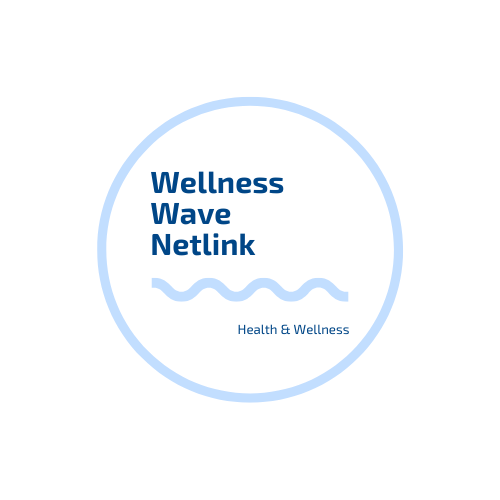Picture this: you’re standing at the shoreline, surfboard in hand, watching a massive wave roll in. You’ve got two choices—paddle hard and ride it with confidence, or stand frozen and get knocked over. That’s exactly how 2025 feels for the fitness and wellness industry. Change is coming fast, and the businesses that ride the wave will thrive while the rest risk being left behind.
In this post, we’ll dive into five of the biggest fitness trends shaping 2025—from wearables to holistic wellness—and show you how to adapt. Think of this as your surf guide to staying ahead of the curve.
1. Wearables & Data-Driven Training: Your New Best Friend
Gone are the days of guessing whether a workout “felt good.” Today’s clients want proof—calories burned, heart rate recovery, sleep quality, even stress levels. Wearable tech is no longer a gimmick; it’s the gold standard.
The American College of Sports Medicine ranked wearable technology as the #1 fitness trend for 2025, showing just how deeply it’s embedded in our daily routines. Consumers now expect their coaches and gyms to understand—and use—that data.
Pro Tip: Offer programs that sync with wearable devices and interpret the data. For example, weekly performance reviews based on smartwatch reports or HRV (heart rate variability) insights.
Stat Check: The global wearable fitness tech market is projected to hit $138 billion by 2028 (Statista).
Industry Voice: “Digital technology applications are becoming more critical to how we design, deliver and evaluate health and fitness services.” — A’Naja Newsome, ACSM
2. Virtual & Hybrid Fitness — The Best of Both Worlds
The pandemic may have sparked online training, but hybrid fitness is here to stay. Clients want the flexibility of attending a live class one day and streaming from their living room the next.
A 2025 ACE Fitness report highlights that businesses offering hybrid memberships see higher engagement and fewer cancellations. It’s not about replacing in-person—it’s about giving choice.
Pro Tip: Bundle memberships so clients can attend in-person OR online without barriers. This hybrid approach broadens your reach beyond your local community.
Stat Check: According to IHRSA, 80% of fitness clubs now offer virtual options alongside traditional memberships.
Industry Voice: “Hybrid training gives people more freedom to engage with wellness in a way that fits their lives—and that’s powerful.” — Cedric Bryant, ACE Fitness
3. Holistic Wellness Over Just Workouts
Workouts alone aren’t enough anymore. People want a full picture: stress management, nutrition guidance, sleep optimization, and mental health support.
McKinsey’s Future of Wellness report found that consumers are investing in five key areas: better health, fitness, nutrition, appearance, and mindfulness. If your business doesn’t touch at least two or three, you’re missing out.
Pro Tip: Start small. Add guided meditation sessions, sleep coaching tips, or a simple nutrition consultation to your offerings.
Stat Check: 79% of global consumers say wellness is important, and 42% consider it a top priority (McKinsey).
Industry Voice: “Wellness is no longer siloed—people expect their fitness journey to include mental and emotional health too.” — Dr. Josh Axe, Functional Medicine Expert
4. Gamification & Engagement Mechanics
Remember how addictive Candy Crush was? That’s the same psychology keeping people hooked on their fitness routines—gamification.
Leaderboards, streaks, badges, or simple weekly challenges give clients a dopamine hit that fuels consistency. A study in the Journal of Medical Internet Research found that gamified health apps increased physical activity by 60% compared to standard tracking apps.
Pro Tip: Run monthly challenges like “30-day plank streaks” or offer achievement badges for consistency. These micro-wins build long-term loyalty.
Industry Voice: “People don’t just want workouts—they want an experience that excites them.” — Chris Clawson, CEO of Life Fitness
5. Inclusivity & Adaptive Fitness for All Bodies
Fitness isn’t one-size-fits-all, and in 2025, inclusivity is no longer optional. Consumers expect gyms and wellness brands to support every body type, age group, and ability.
From adaptive workouts for people with disabilities to culturally sensitive classes, inclusivity builds trust and expands your market. The Intenza Fitness report emphasizes inclusivity as one of the fastest-rising values in client decision-making.
Pro Tip: Train your staff in adaptive modifications and highlight inclusive programming on your website and social media.
Stat Check: A 2023 survey found that 72% of consumers prefer brands they feel represent “people like them.”
Industry Voice: “True fitness is for everyone—not just a chosen few.” — Michelle Obama
Final Thoughts: Catch the Wave Before It Passes
The wellness industry in 2025 is like an ocean full of opportunities—but only if you’re willing to paddle into the wave. From data-driven training to inclusivity, these five trends aren’t just buzzwords—they’re the future of fitness.
So, ask yourself: Which of these trends will I ride first? Whether it’s syncing wearables with your programs, launching a hybrid membership, or rethinking inclusivity, the key is to start now.
Because in fitness—and in business—the best time to adapt was yesterday. The second-best time? Today.



